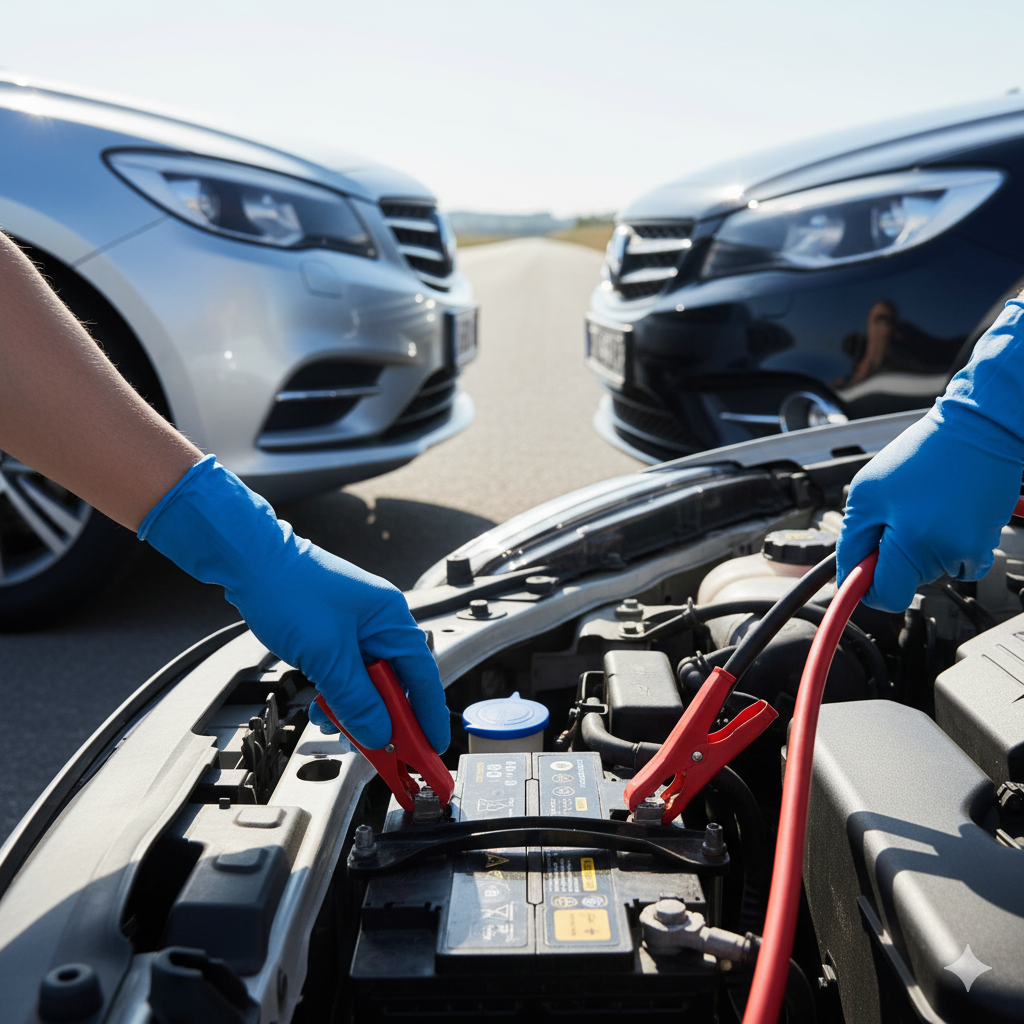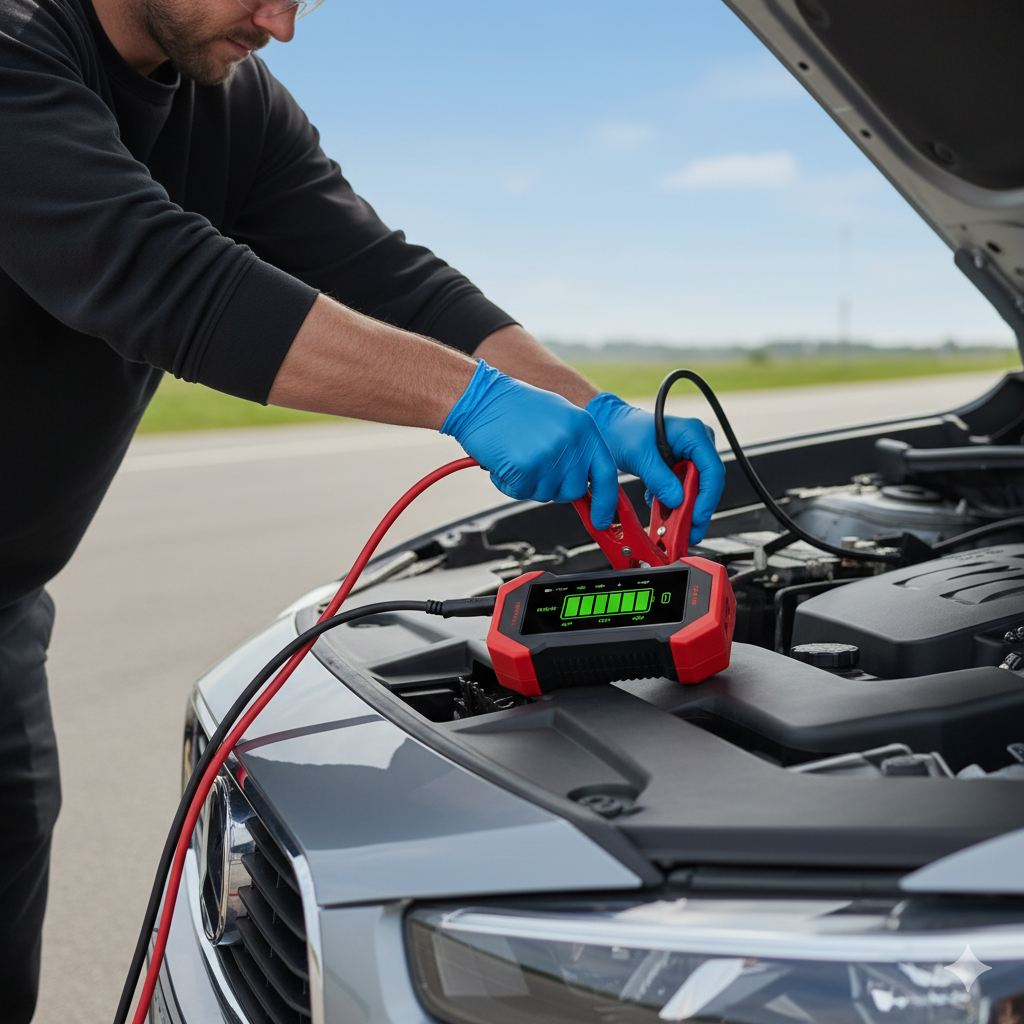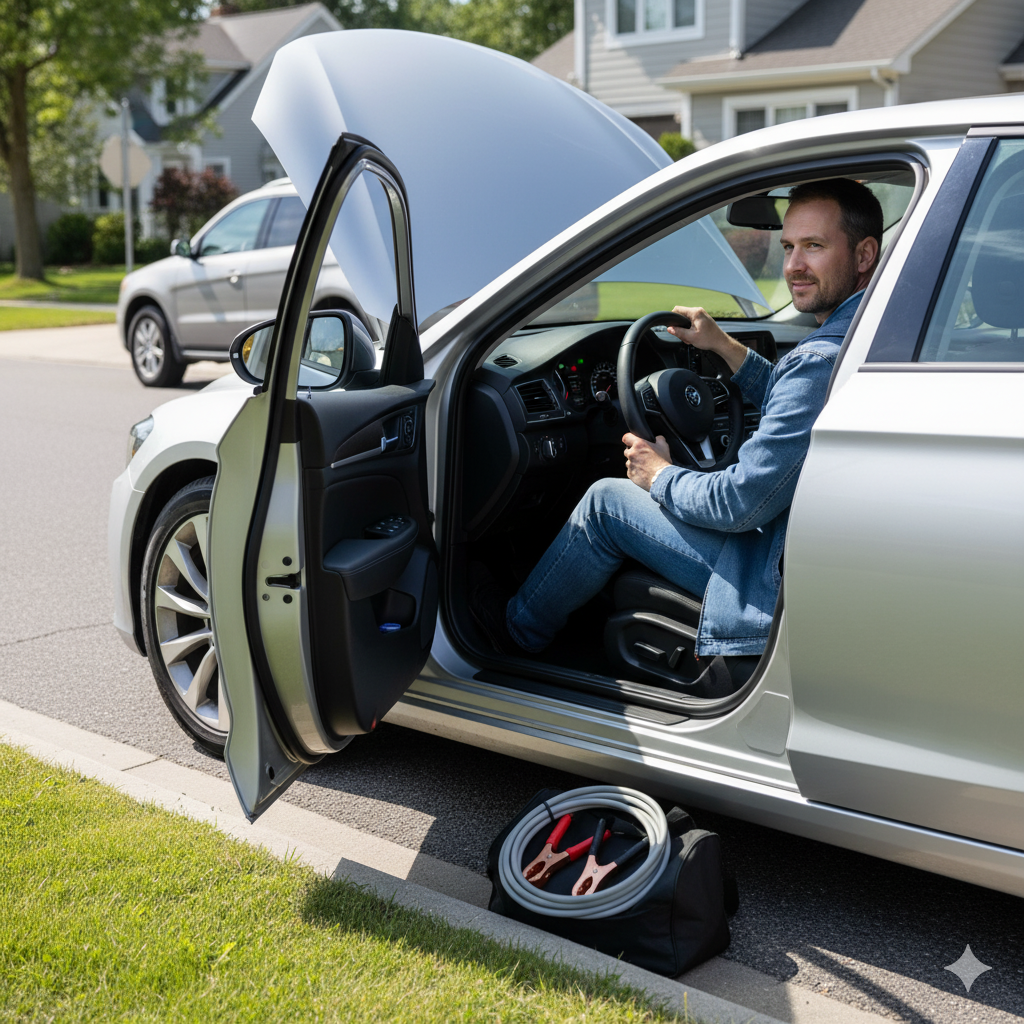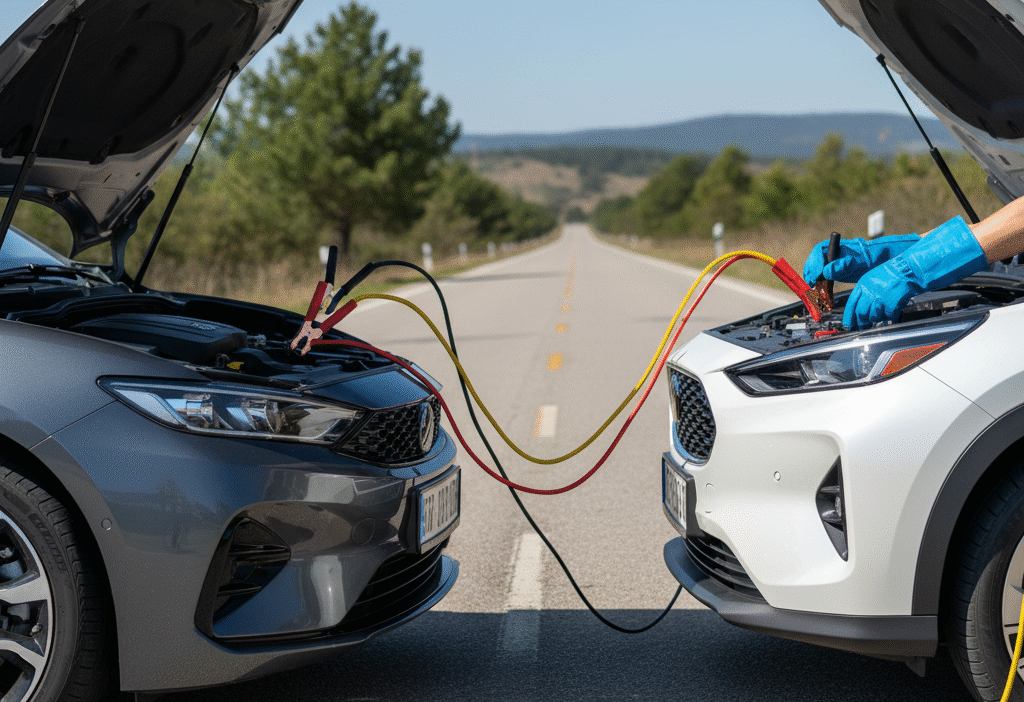A dead car battery is a common issue worldwide. Jumping a car is often the fastest solution to get back on the road. This guide covers safe procedures for jumper cables and portable jump starters, troubleshooting, and best practices for different environments. Written by automotive experts and aligned with EEAT principles and Google 2025 helpful content guidelines, it ensures both safety and clarity.
Why You Might Need to Jump a Car
- Dead battery after lights left on, cold weather, or old battery.
- Emergency situations where roadside assistance isn’t immediately available.
- Travel preparedness for long trips or remote areas.
User Experience Insight: Jump-starting provides immediate relief, but understanding proper technique ensures safety and protects both vehicles’ electronics.
Safety First — Essential Precautions
- Never smoke or allow open flames near batteries.
- Check for cracks, leaks, or corrosion on both batteries.
- Vehicles must be in Park (P) or Neutral (N) with parking brakes engaged.
- Avoid touching clamps together once connected.
- If unsure, call roadside assistance rather than risk injury.

How to Jump a Car with Jumper Cables
1. Position the vehicles safely — close but not touching.
2. Open hoods and identify positive (+, red) and negative (–, black) terminals.
3. Connect the positive clamp to the dead battery.
4. Connect the other positive clamp to the booster battery.
5. Connect the negative clamp to the booster battery.
6. Connect the final negative clamp to a grounded metal point on the dead car (engine block or chassis).
7. Start the booster vehicle and let it run 2–5 minutes.
8. Start the dead vehicle.
9. Remove cables in reverse order: black from dead car, black from booster, red from booster, red from dead car.
10. Let the jumped car run 15–30 minutes to recharge.
Advanced Tip: Use gloves and safety glasses for extra protection.
How to Jump a Car with a Portable Jump Starter

1. Ensure the jump starter is fully charged.
2. Turn off the car’s ignition.
3. Connect clamps: red to positive, black to a grounded metal point.
4. Power on the jump starter.
5. Start the vehicle and disconnect clamps in reverse order.
6. Let the engine run 15–30 minutes.
Portable jump starters are convenient and reduce risk of backfeed or incorrect connections.
Troubleshooting & Aftercare
- Check cable connections if the car doesn’t start.
- Inspect the battery for damage or corrosion.
- If the car starts but the battery light stays on, the alternator may be failing.
- Drive at least 15–30 minutes to recharge the battery.
Cultural / User Experience Context
Jumping cars varies across regions due to vehicle types, climate, and infrastructure:
- Cold climates (e.g., Canada, Scandinavia): Batteries are more prone to failure in winter; extra care is needed for frozen terminals. Users often rely on portable jump starters rather than waiting for another vehicle.
- Developing countries: Public knowledge about jumper cable safety may be limited; roadside assistance is less available, making community help and hands-on experience crucial.
- Hybrid and electric vehicles: Popular in regions like Europe and East Asia. Jumping traditional 12V components requires manufacturer-specific guidance; incorrect procedures can damage electronics.
- User experience: People value safety, simplicity, and speed. Portable jump starters are preferred by younger drivers and urban users, while rural drivers may rely on neighboring vehicles.
Takeaway: Understanding local context improves safety, avoids mistakes, and ensures a smooth jump-start experience regardless of where you are.

Common Mistakes to Avoid
- Reversing polarity.
- Using damaged cables.
- Jumping frozen or leaking batteries.
- Leaving vehicles connected too long.
FAQs
1. Can I jump any car with another car?
Most 12V vehicles are compatible, but always check the manual, especially for hybrids/EVs.
2. How long should I drive after a jump?
At least 15–30 minutes to recharge the battery effectively.
3. Is it safe to use a portable jump starter?
Yes, they reduce risk and simplify the process, especially for sensitive electronics.
4. What if the car still won’t start?
Battery may be dead, or starter/alternator may be faulty. Call professional assistance.
Conclusion
Jumping a car is a critical skill for drivers worldwide. Understanding proper procedures, safety measures, and local user habits ensures both safety and reliability. Incorporating Cultural / User Experience Context helps drivers adapt techniques depending on climate, vehicle type, and available resources.



